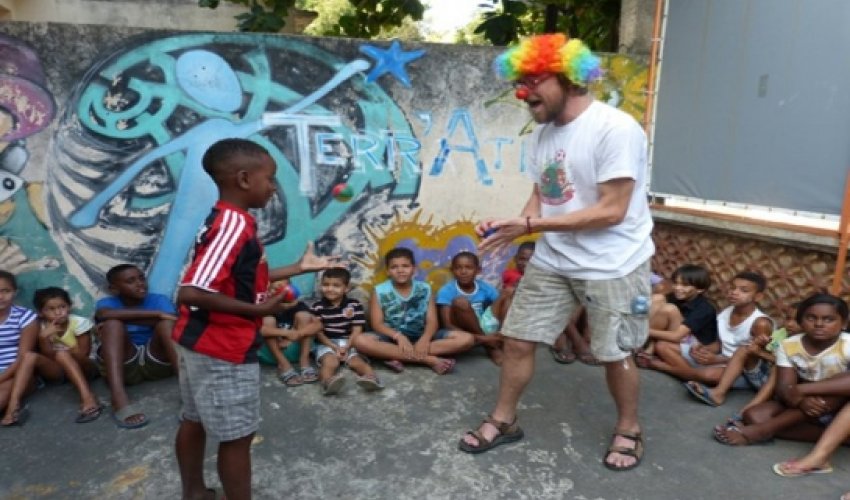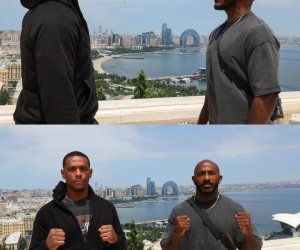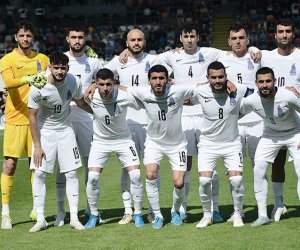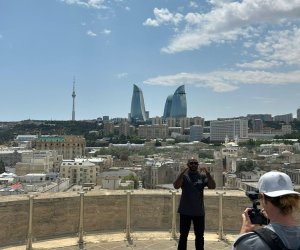The truth behind post World Cup Brazil’s grave social issues

I found this remarkable. These children lived a half-hour train ride from the endless beaches of Rio de Janeiro, and 10 minutes from the Maracana, yet they had grown up totally unaware of their surroundings.After the World Cup ended, I visited Morro do Fuba, a small favela near the suburb of Cascadura, which has a direct train line to Rio Central. It forms part of the Zona Norte, a sprawling complex of suburban residential towns and villages.The towns themselves are largely working and lower-middle class; but the favelas are run by semi-legitimate militia or gangsters, and are desperately poor.Many visitors to Brazil during the World Cup had an entirely different view of the favelas – fans and journalists visited areas such as Vidigal and Rocinha, which have been ‘pacified’ in recent years. Some foreigners stayed in favela hostels, marvelled at the shabby urban chic of the DIY architecture, and went dancing at exclusive nightclubs owned by expatriate DJs. Even David Beckham has been known to hang out in Vidigal, which overlooks the Ipanema beach and the beautiful Sugarloaf mountain. He was reported to have bought a property there too.Vidigal and Rocinha – which also directly overlooks the beach – are Rio’s ‘prize’ slums; they’re not even really slums any more. Special military police force BOPE has a base in one. Think Brooklyn or the East End in the 90s. On the up, gentrifying even.But Zona Norte – and Morro do Fuba in particular – remains a blight on the government’s attempts to ‘clean up’ Rio. Geographically more isolated, they are not within walking distance of the city centre, well clear of the tourists the authorities seek to protect. And, while the urban poor in central Rio reaped the benefits of the World Cup by selling anything they could to fans, these people are on the fringes and will see little or nothing of the tournament’s riches.Out of sight, out of mind – quite literally as, while Rocinha and Vidgal were clearly marked on tourist maps handed to visitors during the World Cup, Zona Norte’s favelas were airbrushed out of the equation. The maps I saw simply had acres of lush green mountains in place of these slums. Most would not have been aware of their existence.But back to the children. Justine works for NGO Terr’Ativa, which seeks to aid the development of favela children living below the poverty line. These are youngsters aged 6-12, who attend school in shifts – the morning, or the afternoon. And for the rest of the day they need care, because their parents are either working to forage a living or, in some cases, because the parents can’t be trusted to look after their kids.“In addition to poverty, there are problems with alcoholism, drug abuse, violence,” Justine continued. “So we try to fill the gaps. We help them with homework, creative arts, social skills. We also work on their racial awareness – because, while hidden, there is a surprising amount of racism in Brazilian society.”Racism in Brazil, the rainbow nation with every colour, creed and religion? It may surprise some readers, but many of you will be aware that – while superficially multi-cultural – there is a clear hierarchy in Brazil: those of European descent at the top, those of African or indigenous descent at the bottom, and everyone else in the middle.Most of these children were dark complexioned. And some, it seems, were uncomfortable in their skin, acutely aware that their class is not the class of President Dilma Roussef, or the celebrities they see on television, many of whom are of European descent.“It’s not just the skin colour, but the clothes – when we took them to the theatre, some parents would not let their children go, because they felt ‘they didn’t belong’ there.“The beach is out of their reach, not just because they don’t feel they belong there, but because they can’t afford the BRL3.50 train fare (approximately 90 pence). They have never been able to afford it – that’s their family budget for the day.”Forget buying a ticket for a football match at their local stadium – they cannot even afford to get there.Enough of the niceties. Not being able to hit the beach or catch a World Cup game is the least of their worries. In addition to the strife they may encounter at home, favelas like Morro do Fuba are exceptionally violent places.This one currently in the hands of a militia – local men (sometimes off-duty or retired cops) who are paid by politicians and business leaders to ‘take charge’ of the favelas. Rather a semi-mafia than the gangsters which previously controlled the slums, they argue, cheaper and lower-risk to have locals taking care of business than to send the feared BOPE Elite squads. Why pump serious resources into an area the tourists and richer locals will never see?But these militia are often little better than the gangsters: they too claim protection money, and control basic services, such as water, electricity, internet. Refuse to pay their inflated and often unaffordable rates, and go without – or worse.This violence is never too far away. This was a Tuesday afternoon. I had been due to visit the previous Friday, but it was cancelled at short notice. My contact said it was because of the rain. When I did arrive at the favela, I was told that, actually, there had been a shoot-out between the militia and the notorious Red Commandos, a criminal gang who had previously held this strategically important slum (it is near a university, and therefore fertile trading ground for drugs), and who were trying to take it back after seven years.Indeed, I was advised (more like ordered) not to go too far up the hill, not to hang around too long on the roof – and not to mention the Portuguese word for militia, at all, anywhere.The fear is not confined to the locals. The NGO operating in this favela has its own tragic story. Terr’Ativa is actually a second-wave charity in Morro do Fuba.It was originally set up in the late 1990s, by French development expert Delphine Douyere. Along with her husband, Christian Doupes, Douyere created a series of charity projects in favelas across Rio. In Morro do Fuba, football was used to get youth into education; the legendary former Lyon midfielder Juninho Pernambucano sponsored it. In other areas, fashion and music were the tools. It was working brilliantly.One of the street kids she helped was Tarsio Wilson Ramires, a man in his mid-20s who had followed the programme and ended up working for the charity. He was put through college, became a senior employee, and attended the 1998 World Cup in France after winning a prize for his work. He was trusted with the children, project management and money.But he hadn’t fully changed and had been stealing that money, around £20,000 in total.Another French employee of the charity, Jerome Faure, found out. But before he had time to report the theft, he was tied up, tortured and murdered by Ramires and two accomplices at the charity’s offices in central Rio; Douyere and Doupes arrived at the scene and were also killed. The trio planned to burn the bodies and evidence by razing the office block to the ground and potentially killing more innocents.But Copacabana is not the favela, and the police arrived on the scene before they could torch the place. All were given life in jail.“It took us many years to secure investment for this project,” Justine said.“No-one wanted to get involved, they were scared because of its past. But gradually it picked up and this year has been great.“We are now getting state funding, which was unheard of before – the minister of culture and local businesses are investing. Next year should be even better.”Other organisations are also getting involved. I met another Frenchman, Jeremie, who – as part of an initiative called ‘TWAM’ (Travel With A Mission). He introduced me to Justine in the first place, and was in Rio during and after the World Cup.“Travel With A Mission is like an adult, professional version of a GAP year,” Jeremie – an engineer and sustainability expert – told me.“Instead of teenagers spending their parents’ money so they feel good about going off to university, working men and women who decide to go travelling can combine their holiday fun with charity work.“I have set up my own association for when I travel – Ya Pas Probleme (or ‘no worries’) – which allows me to teach circus skills to kids. That’s what I’m doing here. At the end of the project, the kids put on a show for family and friends, and I cook them traditional French food.”You can help Jeremie out with donations here. Through TWAM, anyone can get involved with similar projects. You can read more about that here.Terr’Ativa appears to be working, on a small scale, and provided the promised investment is delivered, the whole Zona Norte could benefit.I spent most of the World Cup in Rio, and it was clear that the police presence was heightened with a view to protecting tourists, many of whom used the city as a base for travels around Brazil, and all of whom were focused on football and partying.In two years’ time, Rio will be the sole host city of the Olympic Games. The focus will be entirely on Rio, and the visiting fans will not be spread around the country. What is clear from the continued struggles of criminal-owned favelas like Morro do Fuba is that there is still plenty of work to be done.But, in a country with the seventh-largest economy in the world – the United Kingdom is eighth – it is nothing short of disgraceful that this work is being performed by foreign NGOs.(uk.eurosport.yahoo.com)Bakudaily.az




































 Photo
Photo 



 Video
Video 

